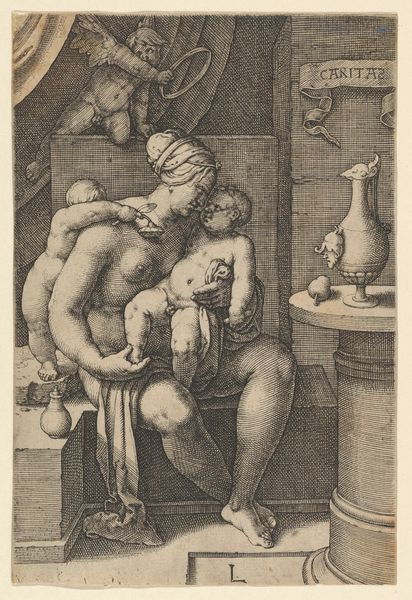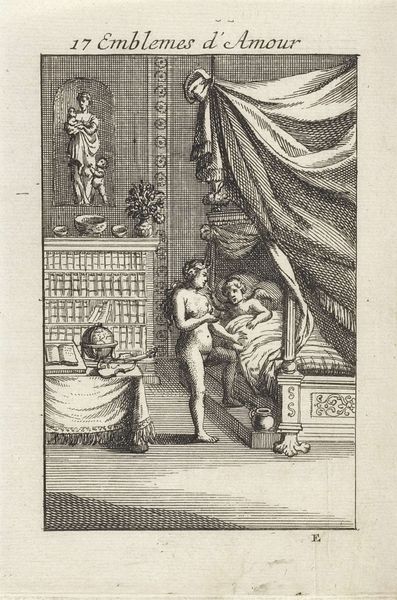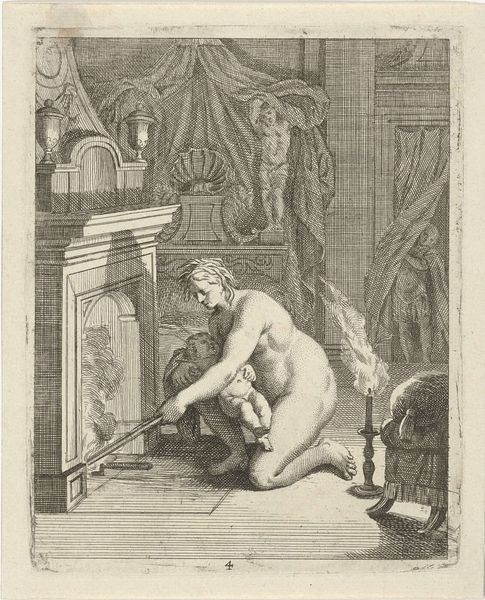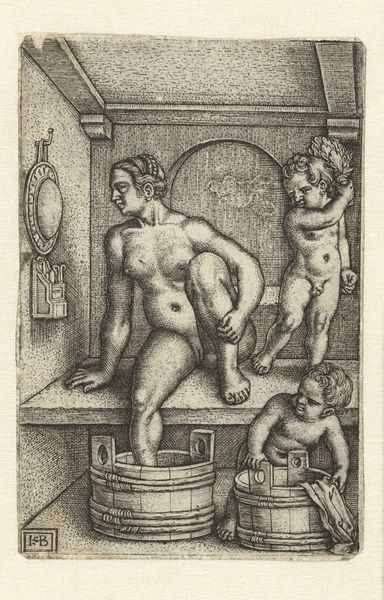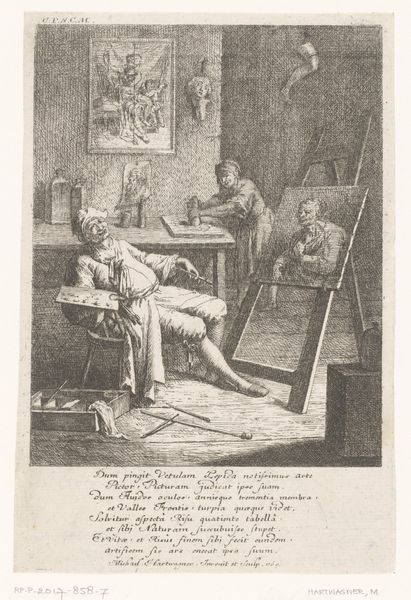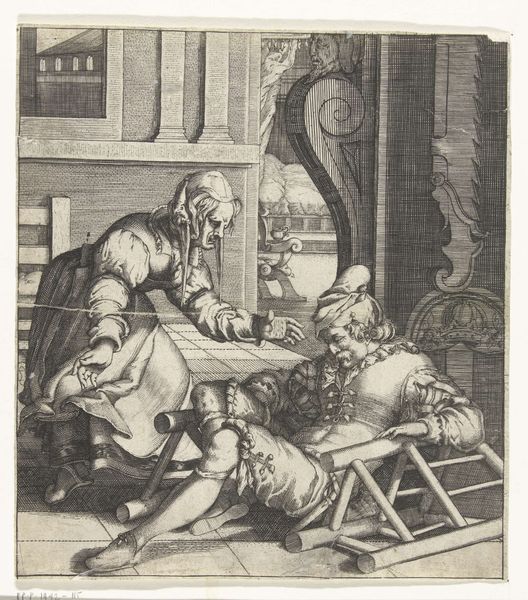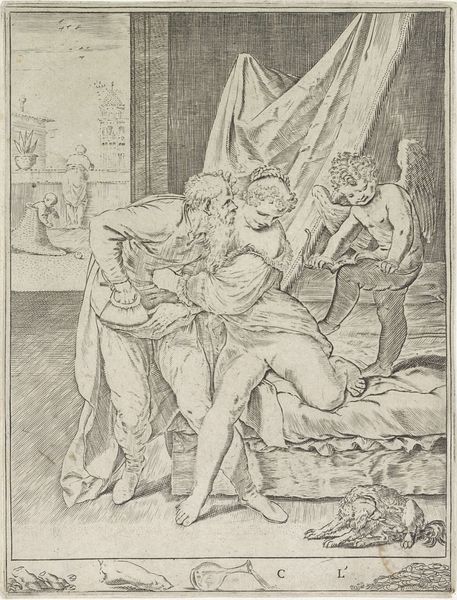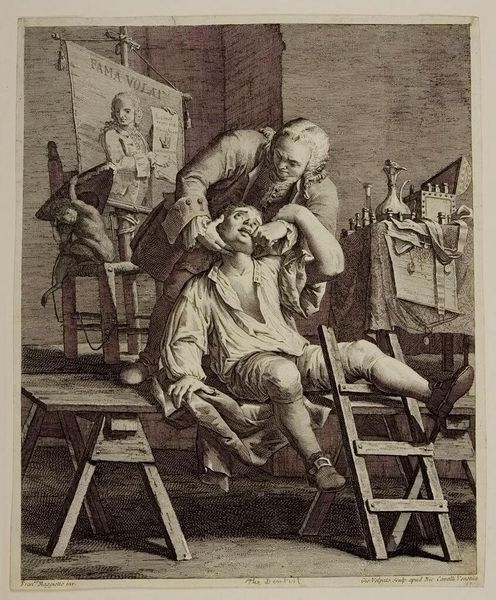
Man maakt een ets in zijn atelier naar beeld van een vrouw 1710 - 1766
0:00
0:00
drawing, print, engraving
#
drawing
#
baroque
# print
#
old engraving style
#
figuration
#
pencil drawing
#
genre-painting
#
academic-art
#
engraving
Dimensions: height 186 mm, width 138 mm
Copyright: Rijks Museum: Open Domain
Curator: Here we have “Man maakt een ets in zijn atelier naar beeld van een vrouw," or "Man making an etching in his studio after an image of a woman," by Thomas Worlidge, dating roughly from 1710 to 1766. It's an engraving, so lines and textures are everything. What's your first take? Editor: Immediately, I'm drawn to the staged quality of this atelier. There's a performance happening not just within the act of creation, but in its display—note the positioning of the female nude on those stairs and the observers lurking by the window, likely male, creating an enclosed, exclusive circuit. Curator: You pick up on that theatrical quality immediately. It almost feels as though Worlidge is inviting us behind the scenes. I see a real dance here, between observation and creation, the living model and the stone busts peering down, practically muses in their own right. Editor: Right. The sculpture further reinforces the layers of mediation in art creation – plaster casts mass produced to stand in for ancient masters. And consider the labor involved. It wasn't a solitary process: prepping the copper plate, the acid etching bath, inking, and running the print – all part of the making, so we are witnessing a microcosm of artistic production and knowledge exchange within this print. Curator: I think the real charm for me is that Worlidge makes no grand gestures. This isn’t about some heroic myth. It’s just a peek into the daily life, the working life, really, of an artist in his world, isn't it? It speaks to the inherent human need to document, to capture beauty, and maybe to show off just a little. Editor: And there’s this question, of who art is for. Is it an intellectual, academic project rooted in canonic tradition? Or a form of cultural and even economic capital produced in specific social conditions? It's striking that Worlidge decided to foreground the studio. Curator: It’s true. I initially looked at this image with one idea in my head – the artist creating art from nature – and I ended up thinking more about the structures, labor and all those things outside the frame we tend to neglect. It’s lovely how an image can work on you in that way, isn't it? Editor: Yes, quite, and the print here becomes a witness to a studio’s activities and an emblem of this network rather than just the single author it seems at first glance.
Comments
No comments
Be the first to comment and join the conversation on the ultimate creative platform.

